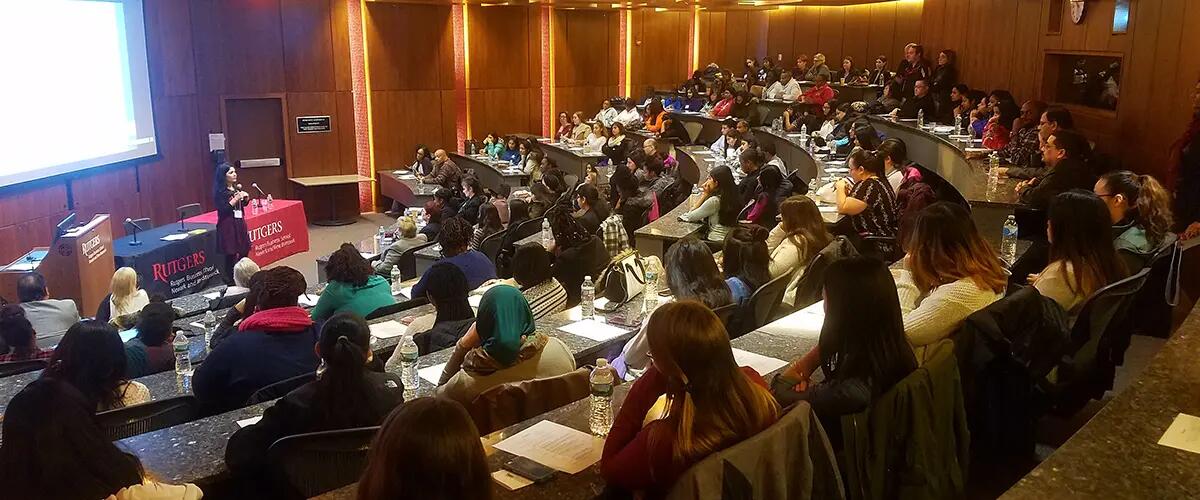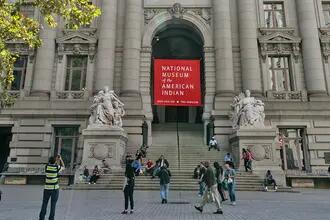
Enhancing presentation skills in the digital age
This is the second of three articles by Rutgers Business School instructor Marc Kalan to appear in "Sales & Marketing Management." Kalan, who has more than 30 years of diverse consumer marketing experience, is a full-time instructor in the Department of Supply Chain Management and Marketing Sciences.
By Marc H. Kalan
From my experiences in the business and academic worlds, whether delivering a business presentation, making a sales pitch, or over the past decade, teaching business classes, the ability to engage colleagues, clients or students has become more challenging and critical.
Here are more tips I’ve picked up during my career that might help your sales and marketing team’s presentations be more engaging, impactful and memorable.
Open strong – Catch your listeners’ attention from the start and engage them in your subject. In today’s fast-paced, rapidly changing world, attention spans are decreasing, so you need to grab your audience right away. Audiences are there because they want to learn from you. An interesting fact and/or rhetorical question are two tools to engage and draw your audience into your talk. Just be sure these are relevant to your listeners, their backgrounds and interests. Concentrate on making them feel comfortable. A relaxed and comfortable audience is ready to welcome you and absorb your talk.
Speak clearly – Don’t mumble, don’t cover your mouth or hold a paper or script in front of yourself blocking the audience’s view. This is a common error that creates a distinct barrier between you, the speaker and your listeners. Notes are fine, I use them all the time; just keep notes below face level. Listeners like to see who they are listening to.
Avoid filling space with non-words – So many speakers feel the need to fill every moment with sound, fearing the lack of sound communicates something, although I have yet to figure out what that is. This is a major point of challenge for most speakers who fill space with what speakers call “non-words.” The most egregious non-word being the ever present “ummm,” followed by the use of conformational expressions such as “like” or “OK.” While occasionally useful terms, in the vast majority of cases (and always with “ummm”) these space fillers actually are a negative. There is truth to the expression “silence is golden.”
Don’t speak too quickly – We speak faster than we can listen and consider what’s being said. Don’t rush yourself. Use pauses, they allow your listeners to catch up to you and digest what they have heard. In fact, those pauses are comforting to the audience and seem much longer to the speaker than to the listener.
Make eye contact– Look at your audience often, and look at individuals and not just the “general audience.” I mean really look at individuals. Look them right in the eyes. Be sure to include individuals in all parts of the room, as well as way in the back. You will draw them, and those around them, into your presentation and they will reward you with their attention and interest. Eye contact also provides you with excellent listener “cues” that will let you know how the audience is reacting to your presentation. Wandering and “sleepy” eyes tell you a lot. You can use these cues to adjust your talk as warranted.
Stick with your natural style – Your individual style and personality should come through. Personal body language is a powerful communication tool. If you are naturally lively, be lively. If you are naturally more reserved, that is fine, too. Just don’t recede away. Your “natural style” will create a forceful presence.
Stories and anecdotes add depth and reality – Stories may be the most effective way to convey information, as well as to provide “color commentary” to an audience while building a relationship with them. It confirms and reinforces you as the “expert,” and demonstrates a practical knowledge that only comes from experience. Stories are easier for people to recollect than straightforward information. They are entertaining, often relatable on a personal level, and probably the most remembered and repeated part of any talk. It’s not a coincidence that many of history’s most notable “communicators,” individuals like Aesop, Plato, Jesus and Lincoln, utilized stories and parables to make and reinforce key points.
End strong – A strong key point, perhaps the answer to the rhetorical question that started your talk or a challenge to the audience with another rhetorical question, are great ways to “leave them wanting more.”
Press: For all media inquiries see our Media Kit


